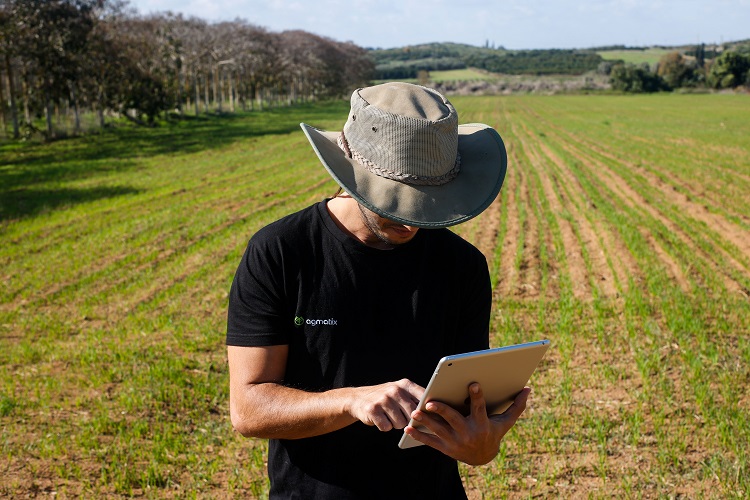Rising field trial costs and stricter regulatory requirements are significantly increasing the expense of developing new crop protection products. This trend underscores the urgent need to reassess and improve field trial methodologies. Agriculture, the oldest industry in human history, often relies on traditional practices, however, modernization is essential when tradition hinders progress. Advanced digital solutions offer a way to streamline field trials, accelerating time to market and reducing the number of required trials, substantially cutting costs. In this article, Ron Baruchi, CEO of Agmatix highlights five costly challenges digitization can address.
Agricultural field trials are fundamental in developing new crop varieties and synthetic and biological crop protection products. Yet, traditional trial management methods are plagued with inefficiencies, data integrity issues, and extensive data processing times. These challenges significantly inflate the costs of bringing new products to market – and for many, make it simply impossible to develop new products. A Crop Life International study reveals that the cost of developing a new crop protection product has surged from $152 million in 1995 to $301 million today, with approximately 30 percent of these costs attributed to field trials.
This highlights a pressing need for agronomists to adopt solutions to improve efficiencies, streamline data analysis and reduce field trial costs. Advanced digital solutions in the form of field trial management platforms can assist greatly with this, but what challenges exactly do they solve?
- Eliminating Inefficiencies
Redundancy in trial management is a major issue. It’s common for uncoordinated teams to unknowingly conduct similar or identical trials, leading to duplicated efforts and increased operational costs. A study by the University of Florida found that inefficient scheduling and resource use increased operational costs by 20 to 30 percent due to overlaps and misallocated resources[1]. A centralized field trial management system accounting for all available resources and required trials can streamline scheduling, eliminating overlaps and avoiding unnecessary expenditures.
Poor communication and inefficient use of historical data often lead to repeated trials. Redundancies can inflate costs by 20-30 percent and consume significant resources. As agronomic trials depend on land, labor, and specific growing conditions, it is likely that field trial redundancies have an even higher cost. Designing models and protocols through a shared platform can minimize these redundancies, optimizing both R&D and marketing demonstration trials.
- Ensuring Data Integrity
Undefined protocols in field trials lead to variations in data collection methods, causing inconsistent data and formats across teams. This inconsistency makes it difficult to compare data and interpret results. A cloud-based platform can resolve these issues by enabling the creation and sharing of standardized protocols which can be easily shared across the team. This ensures the collection of consistent and reliable data for actionable insights.
Manual data entry further increases the risk of human errors, which undermine data integrity. Comprehensive field trial platforms allow agronomists to input data directly into a digital notebook, allowing the data to be instantly verified. An advanced system would also be able to flag potential errors or outliers, ensuring accurate data.
- Accelerating Insights
Data silos, in which vital data is scattered across several platforms and formats, delay critical insights. Consolidating data from several platforms is time-consuming and hinders timely decision-making. A unified data management system can provide real-time insights, enabling faster, informed decisions that accelerate product development. Contrary to some beliefs, implementing these systems doesn’t require a complete overhaul of existing systems or processes, as most digital platforms integrate seamlessly with existing solutions and can process data from other platforms and programs.
Not only this, but a digital platform makes analytics easily accessible to marketing managers by allowing them to independently analyze product performance. From this, they can create visual proof points such as charts and graphs, allowing them to demonstrate product efficacy and create compelling marketing materials.
- Harnessing Legacy Data
Many agronomists and growers have valuable historical trial data which often remains untapped. Previously, many programs wouldn’t be able to combine data sets collected with different methods – but this is no longer the case. According to a report by the Food and Agriculture Organization (FAO), effective use of legacy data can help to improve decision-making capabilities by 30 to 40 percent[2]. This demonstrates the need for historical information within data analysis, aiding accurate predictions on crop production, soil health, and weather patterns, as well as identifying potential cost-saving opportunities and risks.
- Managing Outsourced Trials
Outsourcing trial work introduces logistical challenges, including limited access to raw data and the inability to monitor progress, potentially resulting in delays and disrupted product certification. A robust field trial management tool can provide real-time data access and monitoring, ensuring trials stay on track and any issues are promptly addressed.
The Path Forward
The agricultural industry faces pressure to innovate with fewer resources. Adopting advanced field trial management systems is crucial for improving efficiency, data integrity, and decision-making speed – and crucially, making product development a more cost-effective process. This in turn will enable faster product development, certification and release – and potentially, enable the commercial launch of solutions that might never have reached the market without these lower cost trials. Advanced field trial management systems are already allowing growers to increase yields, reduce waste, and produce more ‘profitable’ food with less land. By streamlining these processes, we can make significant strides in addressing global food shortages, ensuring a more sustainable and food-secure future.



























